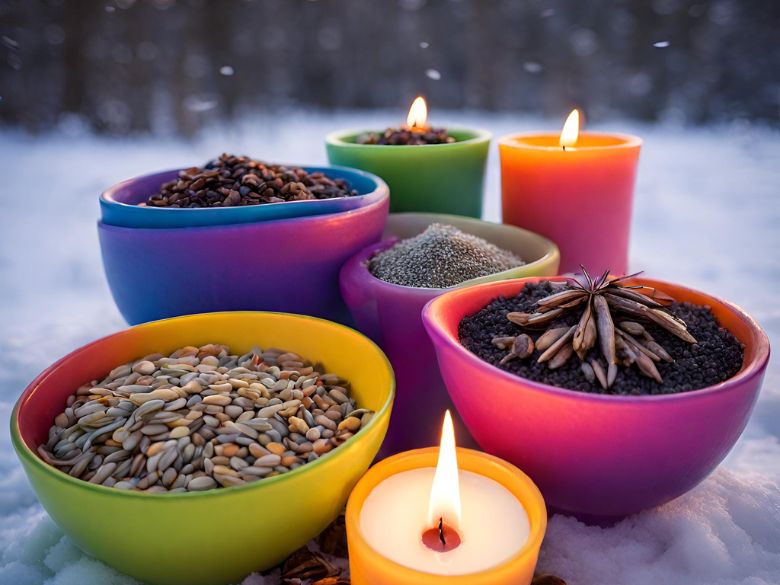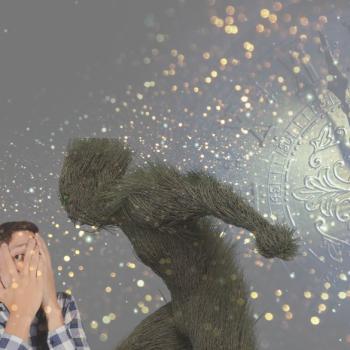
January is nearly over, and shelves are already stocked with heart-shaped boxes, just in time for the American “Month-of-Love” to arrive. Around the world, various religions and cultures are planning ceremonies that celebrate the blessing of seeds and the return of light. This period, signaling a soon-to-end winter and the onset of spring is rich with the symbolism of renewal, rebirth, and rejuvenation. Diverse ceremonies feature unique practices and embody similar teachings. Here are just a few:
Imbolc – Celtic Paganism
Imbolc, celebrated on February 1st, is a significant festival in Celtic Paganism. It’s the halfway point between the winter solstice and the spring equinox. Its name, interpreted by some as meaning “in the belly,” indicates the early signs of spring and is associated with the goddess Brigid, revered for her influence over fire, healing, and poetry.
Ceremonies and Practices:
- The lighting of Candles: Reflecting the increasing strength of the sun, candles and fires are lit, symbolizing the diminishing power of darkness and the return of light.
- Blessing of Seeds: A central aspect of Imbolc is the blessing of seeds for the upcoming planting season, invoking themes of fertility and abundance.
- Brigid’s Cross: Creating a Brigid’s Cross from reeds or straw is a customary practice, believed to protect homes and invite Brigid’s blessings.
Candlemas – Christianity
Candlemas, a feast of light and hope, is observed on February 2nd. It’s a Christian feast that commemorates the presentation of Jesus at the Temple. Falling exactly forty days after Christmas, Candlemas signifies the end of the Christmas-Epiphany season.
Ceremonies and Practices:
- Blessing of Candles: This day involves the blessing of candles, representing Jesus Christ as the “light of the world.” These candles are then used in various church services throughout the year.
- Processions: Some traditions include Candlemas processions, where believers carry candles, signifying the light of Christ leading the way in the darkness.
- Seeds and Agriculture: In some Christian communities, there is a tradition of blessing seeds on Candlemas, seeking divine favor for a fruitful harvest season.
Vasant Panchami – Hinduism
Vasant Panchami, a Hindu festival observed in early February, marks the onset of preparation for spring. It is dedicated to Saraswati, the goddess of knowledge, music, arts, and learning.
Ceremonies and Practices:
- Worship of Saraswati: Devotees engage in the worship of Saraswati, seeking her blessings for enlightenment and artistic inspiration.
- Yellow Attire: Symbolizing the vibrancy of spring, followers often dress in yellow, and yellow sweets are distributed as part of the celebration.
- Kite Flying: In certain regions, kite flying is a popular activity during Vasant Panchami, representing freedom, joy, and the spirit of the season.
Setsubun – Japanese Buddhism and Shinto
Setsubun, in Japan, is celebrated at the beginning of February, and marks the end of winter and the start of spring, according to the old lunar calendar. It is not directly related to seed blessing but is deeply connected with themes of purification and renewal.
Ceremonies and Practices:
- Mamemaki (Bean Throwing): This ritual involves throwing roasted soybeans to drive away evil spirits and invite good fortune, symbolized by the chant, “Demons out, luck in!”
- Eating Ehomaki: Ehomaki, a special sushi roll, is consumed in silence while facing a lucky direction determined by the year’s zodiac, embodying wishes for good luck and prosperity.
The early days of February, across different religions and cultures, are a period of deep spiritual significance. From awakening love, to the lighting of candles and blessing of seeds, rituals signify interconnection, purification, and the welcoming of new beginnings. These practices reflect a deep-rooted human interaction with nature’s cycles. They embody universal themes of light triumphing over darkness, the pursuit of knowledge, and the hope for abundance and growth. Together, these celebrations create a universal tapestry, illustrating humanity’s enduring longing for renewal and the rejuvenation of life.


















